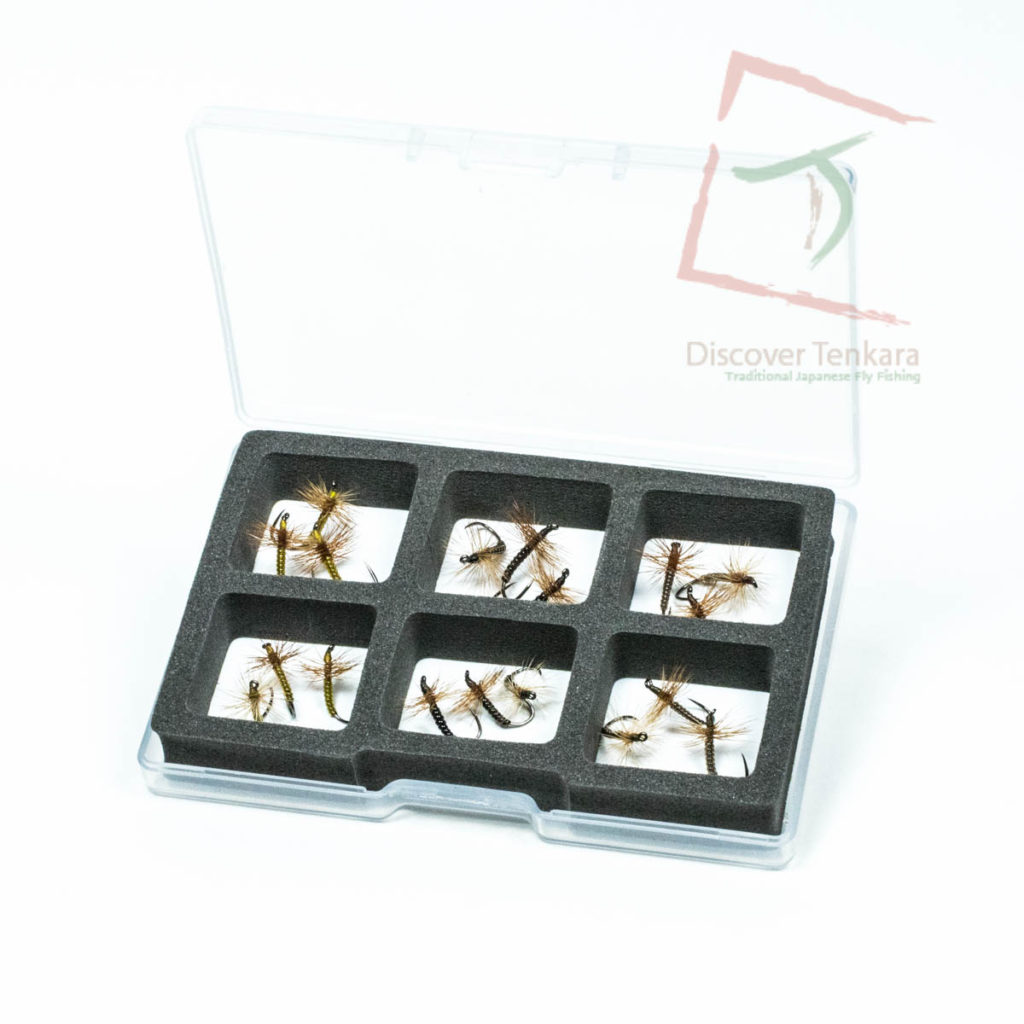
I’m still processing the awesomeness of our recent trip to the Italian Dolomites…
With
our regular visits to the mountain streams of Japan, it would be easy
to get a little bit blasé about what, essentially, is a sensory overload
of scenery, fishing, culture and cuisine.
My recent trip with
Paul saw us meeting up with our Itallian friend and tenkara guide Vito
(Tsurikichi) Rubino in Milan for a two hour drive into the mountains of
northeast Italy. The scenery on the drive and the bridges over clear
blue streams as we neared our destination hinted at the experiences to
come.
Before I talk more about the wonderful fishing in Italy let me take you back to the beginning of 2016… I’m sure you’re curious about the 1000 fish kebari in the title?
It all started while I was working on the edit for the third Discovering Tenkara DVD (now sadly no longer available). Specifically it was the tying by Japanese tenkara angler Tadashi Otani. Otani san ties a kebari on the DVD using a section of rubber wrapped around the hook for the body; not exactly traditional but then Sebata san makes a kebari with a body of black 3M adhesive tape so it’s not completely unheard of. While editing the footage of Otani san it suddenly dawned on me that I’d been doing something very similar in my fly tying for many years… just never with kebari patterns.
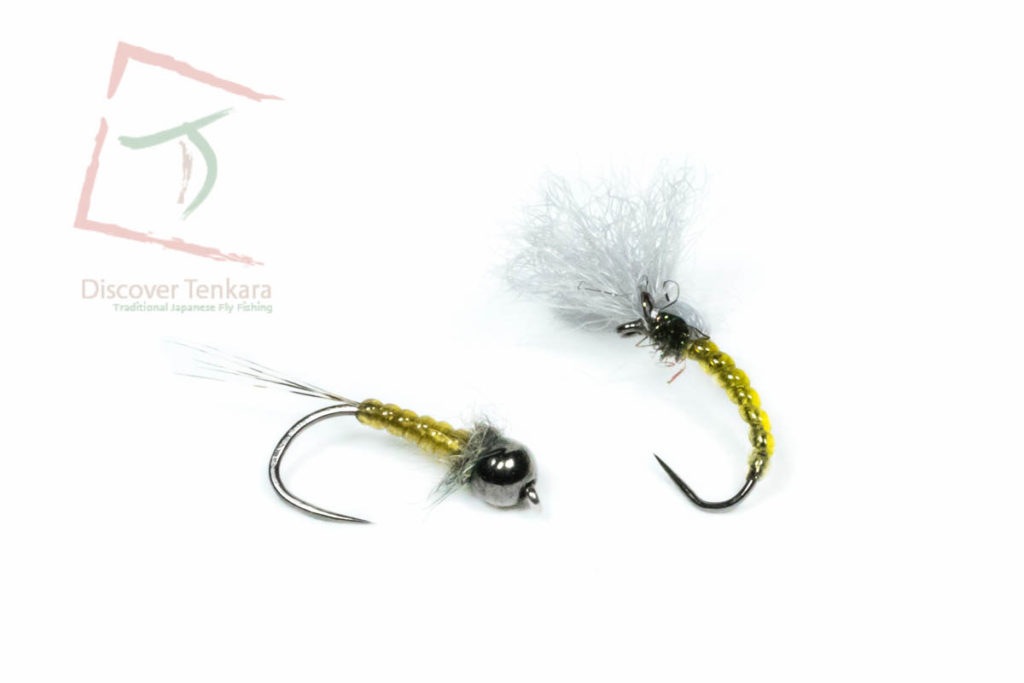
I’m so committed to this style of body in my fly tying that I actually sourced the perfect material for sale via Fish On Productions, called Ultimate Body-Rib and it makes some of the juiciest looking (and most successful) nymph and emerger bodies I’ve ever seen or used.
Why I’d never thought of tying my kebari with this material before I don’t know but as soon as the DVD edit was done it was time to get out the vice and experiment.
The results looked so good… translucent, glossy, juicy looking bodies that just couldn’t fail… could they????
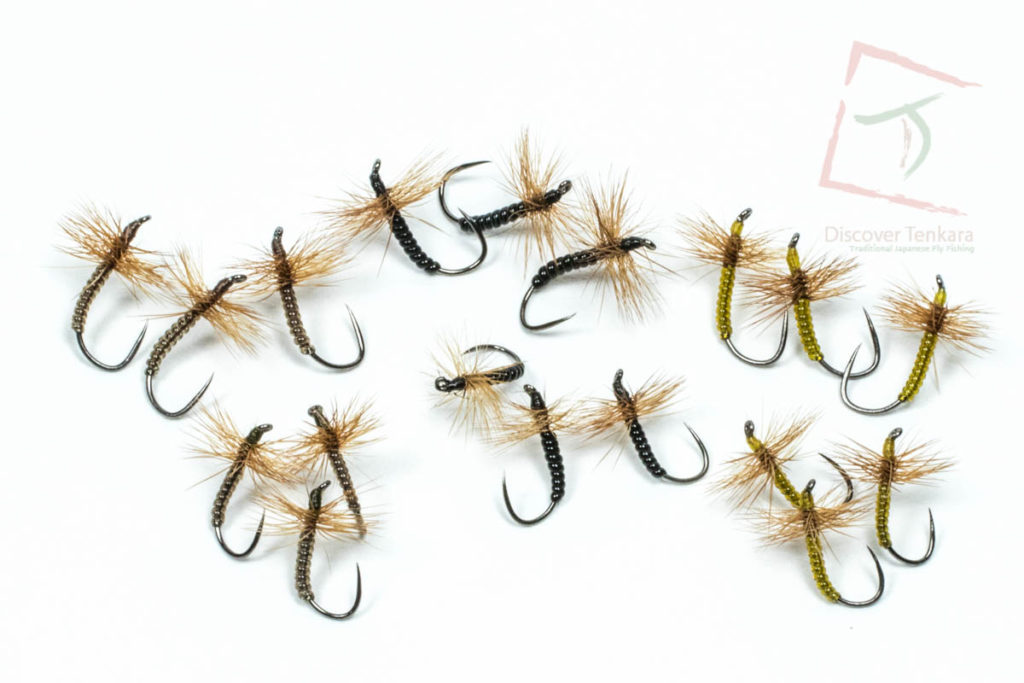
I’ve always been hesitant of sharing new, untested fly patterns and in many articles I’ve written for magazines I’ve referred to a concept I call “born in the vice” where it’s possible to create patterns based on flights of fancy or variations on other patterns rather than objectively weighing up the essential features from the fish’s perspective or the mechanics of how the fly interacts with the water; for those interested, we go into great detail on this subject in our “How to Fool Fish with Simple Flies” Print Book.
Speaking personally (particularly as a guide and instructor) it really worries me about sharing unproven patterns – so I set myself quite an ambitious benchmark of 1000 fish before I consider a pattern a success. If a pattern can’t get me 1000 fish before I get bored with it (or it gets replaced by something better) then it was probably never that a good pattern to begin with.
Now counting precisely 1000 fish over the course of a few months is not exactly easy and I don’t keep fastidious records so by the time we headed out to Italy I knew I was getting close; maybe even there already? Having already used this pattern to great success at home and in Japan I was certainly confident that the pattern was a keeper and had tied up a few extra to share with my new Italian friends.
So, back to the new experiences…
Our
first day of fishing in Italy offered me one guaranteed new experience
and one possibility of a new experience. First up was wet wading – it
may seem inconceivable to some wet wading veterans out there but I have
to admit to being a wet wading virgin!
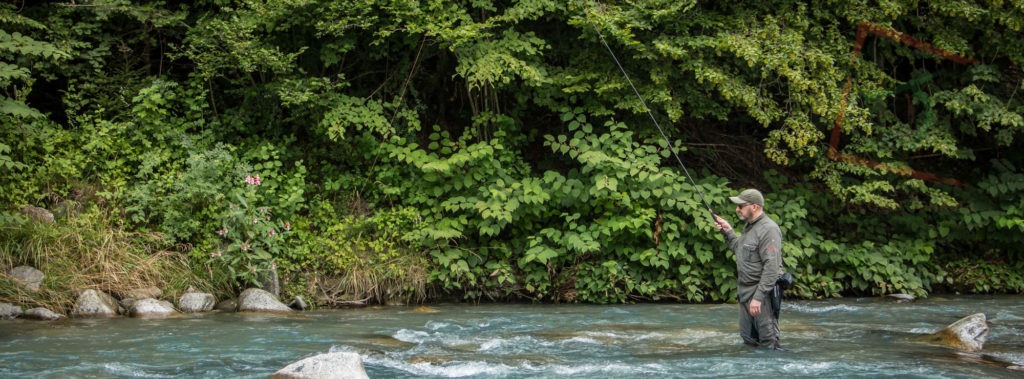
The Sarca River may not have been the easiest venue for a tentative start; more like a baptism of white water running from the snow capped mountains! I have to say though, that kitted out with the right gear (following Paul’s advice) it really was a breeze. Good fitting, lightweight wading boots with neoprene socks over bare feet coupled with thermal long johns, neoprene gaiters and quick drying shorts saw me stepping into the turbulent blue waters of the Sarca with an initial trepidation that quickly turned into amazement!!! What had I been missing all these years??? Wet wading felt like a revelation to me, giving a new level of confidence and freedom. I just can’t see myself reaching for my waders again anytime soon (perhaps when winter kicks in).
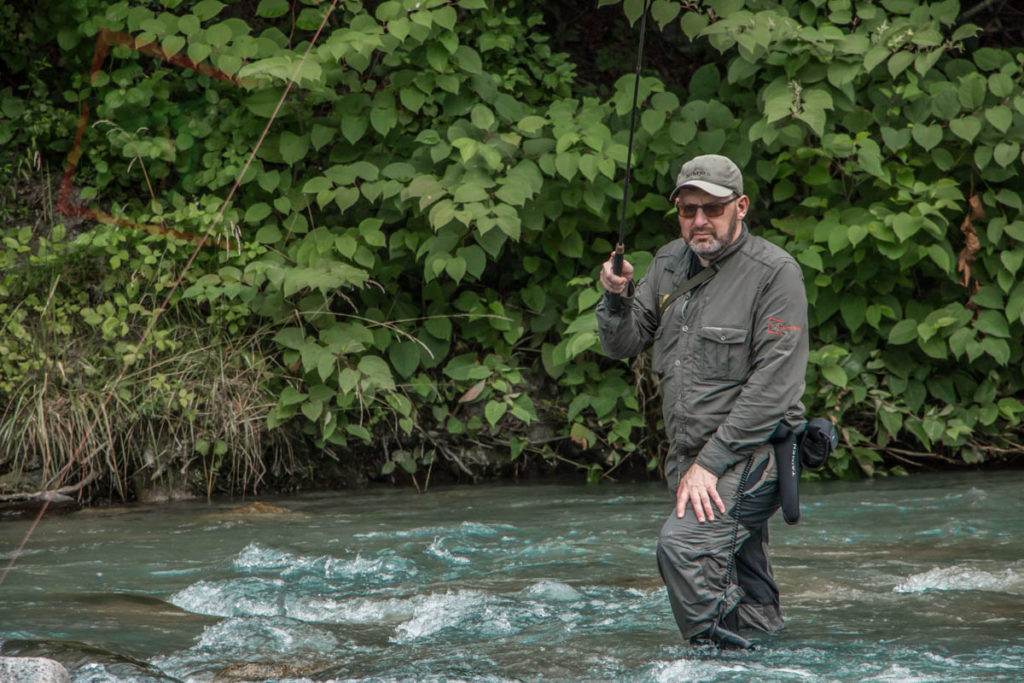
The second (and by no means guaranteed) new experience was the chance to catch a marble trout. I’d only seen these fish in pictures before and with their limited distribution it’s not a species I’ve ever had the chance of before. The really large specimens are often caught using streamers (or spinning gear) but Vito informed us that more modest sized fish are often caught on the fly from the calmer pockets on the river.
Setting up with one of my new favourite rods also conjures up the feelings of new experiences as the Tenkara Centre Otaki (released earlier this year) is the first rod to feature the Discover Tenkara logo and was designed in partnership with me and Paul. At 3.75m it was long enough to reach all the pockets on the far side of the Sarca River but not so long as to clatter in the overhanging trees when fishing close to the near bank – a scenario just like fishing some of my favourite rivers back home. The rod casts beautifully with even the lightest of lines and I opted for a 4m length of #3 Sunline Buttobi level line finished off with around 1.5m of Fujino Turbo V tippet in #1.0 (approx 4lb B/S).
In addition to marble trout, the Sarca holds good numbers of browns, referred to as Farrio by the locals, so targeting faster water was going to be an option too. For much of the faster turbulent water I opted for a downstream presentation with the fly just in the surface film and allowed to travel downstream at various speeds slower than the current. Within a few casts on the first spot I tried this technique accounted for a nice brown just over a pound, putting a nice bend in the Otaki in the fast blue waters of the Sarca.
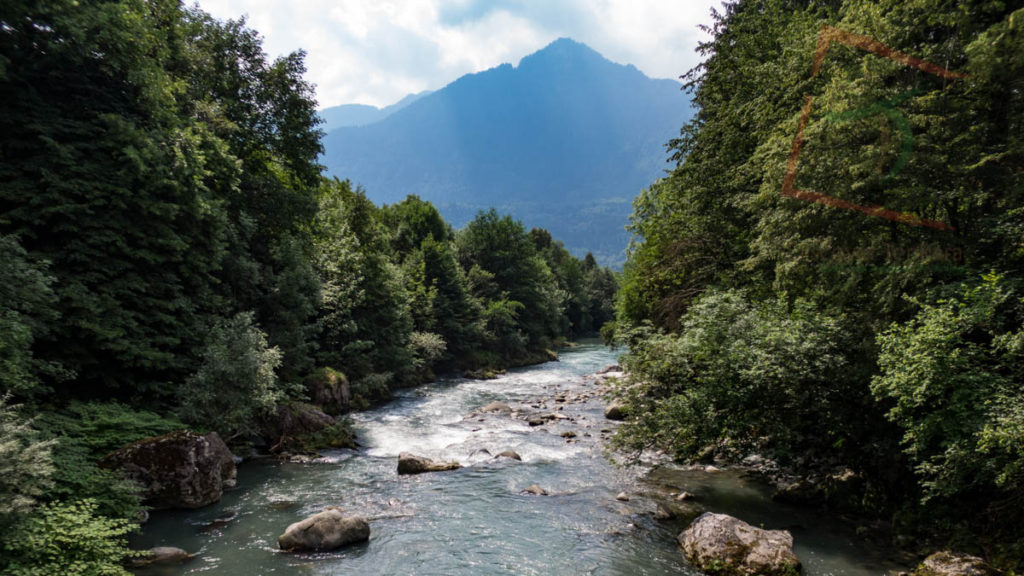
With a few brownies to the net I spotted a small pocket of flat looking water on the far side of some scary looking white water. With the wet wading gear I felt much more stable standing in faster water where loose fitting waders tend to catch the current and pull you off balance; the tight fitting gaiters and closer fitting lightweight boots just feel more precise and sure footed when the wading gets tough. This extra wading confidence let me quickly get in position to put a cast in the likely looking spot which, if I’m honest with myself, I would probably not taken the time to cover if I were wearing waders. The result was a take the instant my kebari touched the water, “fish on!” and a relatively short but frantic fight through the incredibly fast water between me and the fish where the wet wading gear and Otaki’s sensitive tip but nice reserve of power further down the blank really gave me an edge.
Looking down in the tamo it took me a moment to register the unfamiliar species of trout in the net… a MARBLE!!!
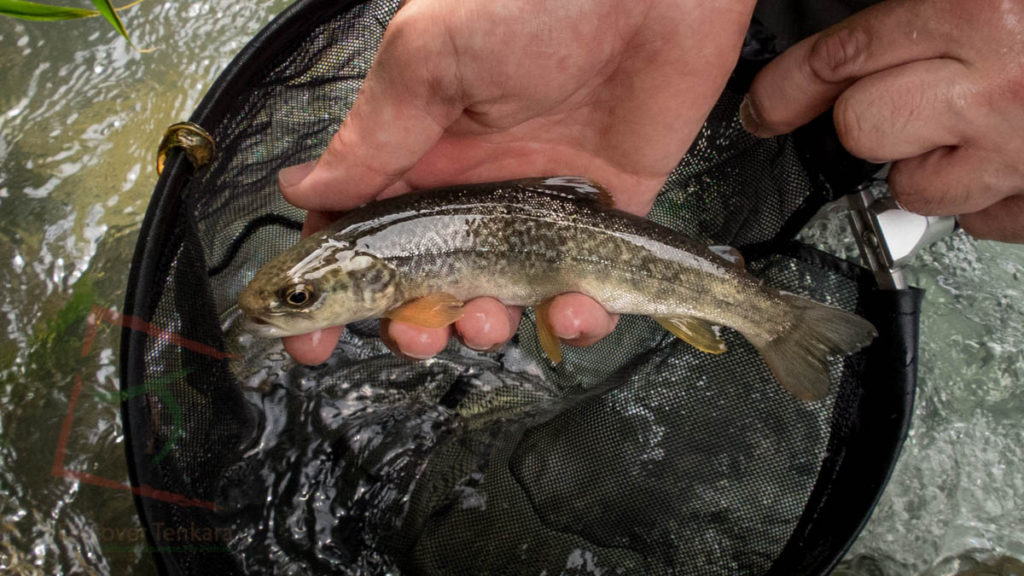
I shouted to Paul in the next pool half for help with a photo and half to get confirmation it was a pure specimen and not a hybrid. It wasn’t the biggest fish but it will be a memorable one for me, my first marble trout.
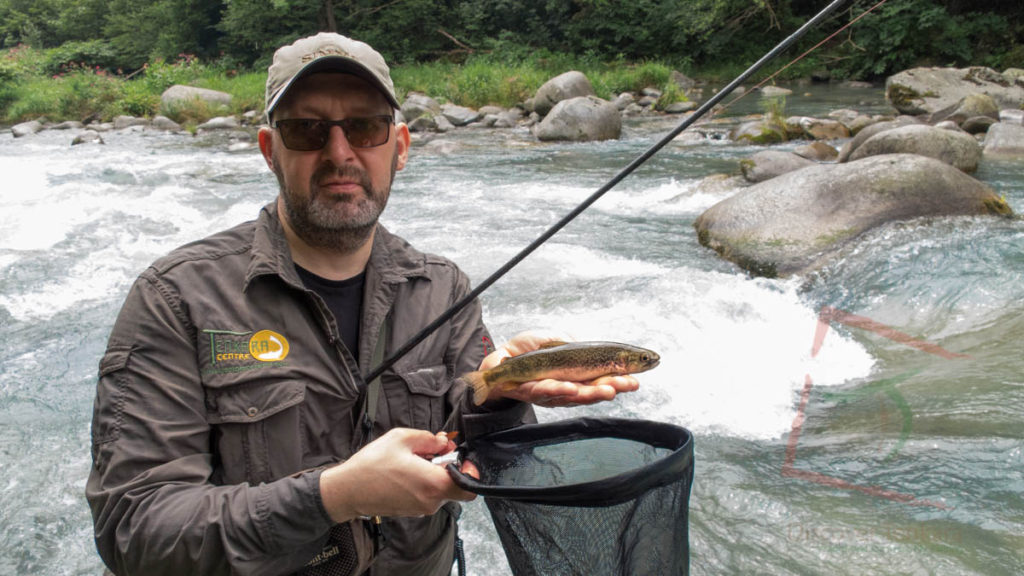
I can’t claim the marble trout was fish number 1000 for my “juicy kebari” pattern (as it’s now being called by the few people who I’ve already shared it with). What I can say is, with more than 100 fish to this pattern in less than three full days of fishing in the Dolomites, the pattern has now definitely passed the 1000 fish mark and I feel confident in recommending it.
